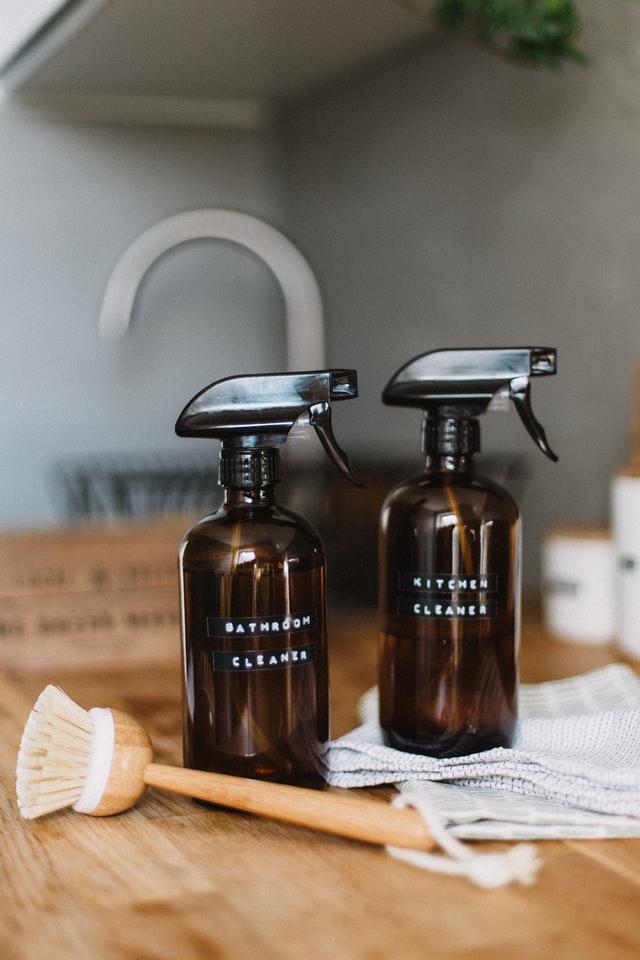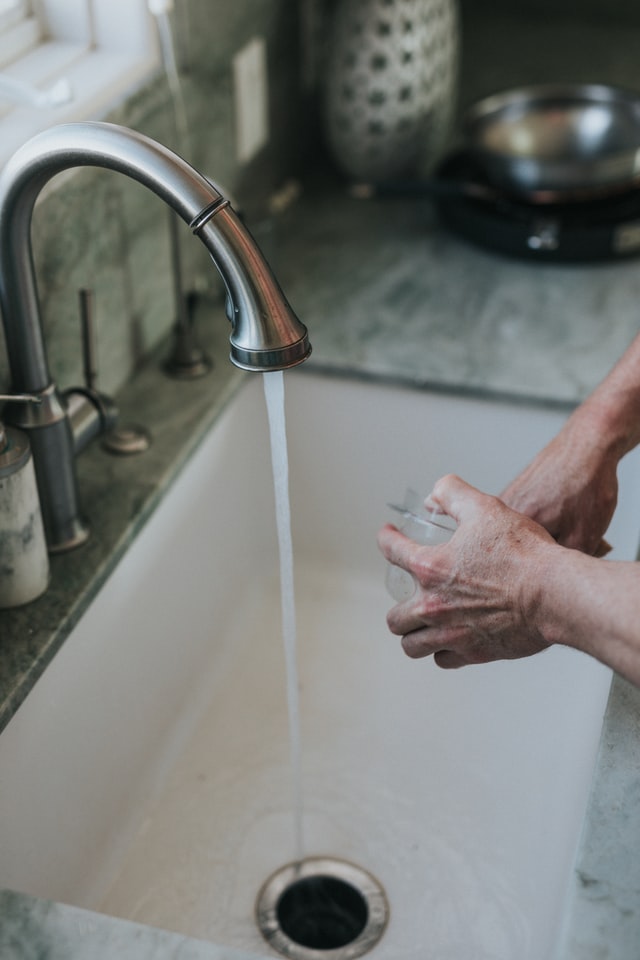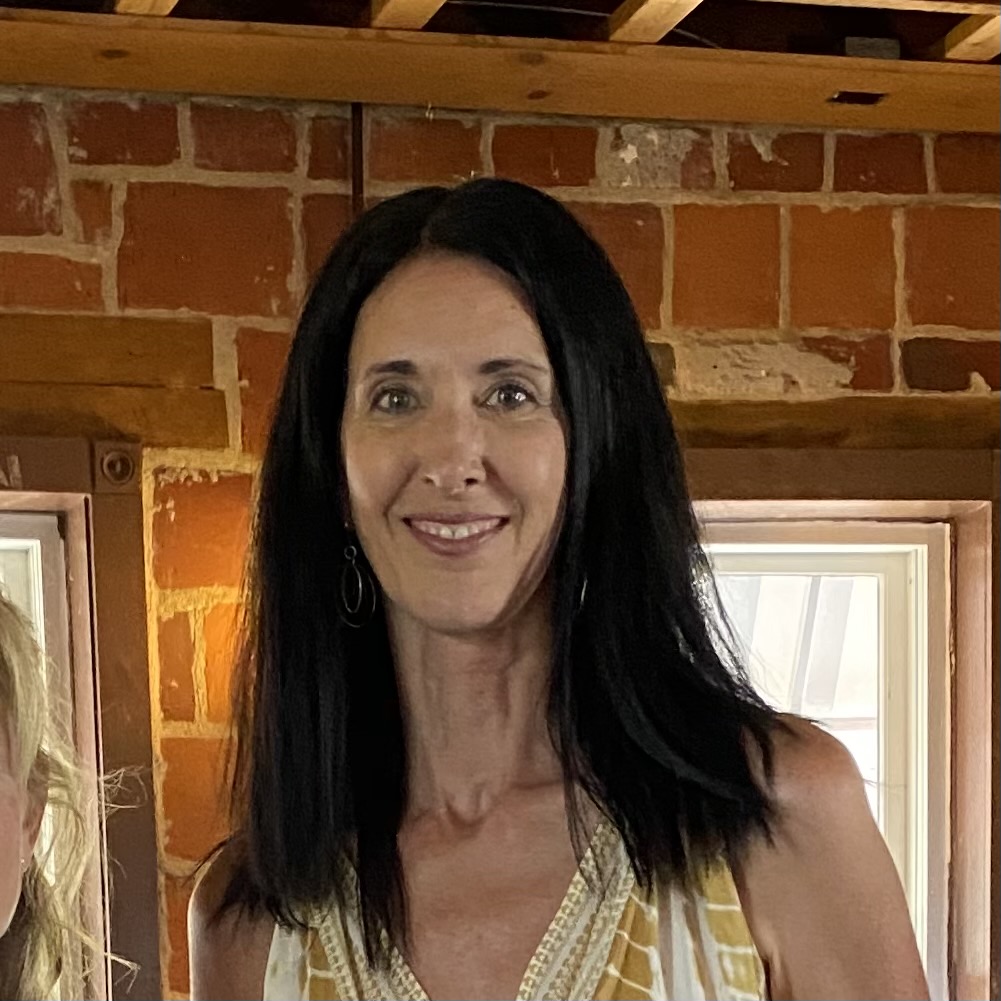11 Best Natural Cleaning Product Swaps For Your Home

Through continued research, I realized that not only what I ate and drank affected my toxic load, but my exposure to the environmental products I use in and around my home also impacted my body. I became increasingly aware of the potentially harmful chemicals we use to clean our home by both touch and inhalation. The determining factor that led me to change the products I was using to clean my home was I wanted to further lower my overall toxic impact. By reducing the chemicals in the household products I use, my toxic exposure would further diminish.
[This post contains affiliate links. If you make a purchase, we make a small commission paid for by the vendor at no additional cost to you! We only suggest products we personally use and love, and know will make your life easier and healthier.]
What toxins are in common household products?
Chemicals in everyday home cleaning products can cause damage to respiratory, digestive, reproductive, and developmental systems as well as cause eczema, asthma, cancer and damage to vision. Look for these ingredients in your cleaning supplies to determine if they are safe for you to use: formaldehyde, hydrochloric acid, sulfuric acid, ethanolamine, sodium borate, poloxamer 124, laureth, formic acid, oxygen bleach, sodium hypochlorite, sodium hydroxide, phthalates, parabens, chlorine, ammonia, triclosan.
Reviewing your products on the Environmental Working Group website can give you detailed information on the concerns and contaminants that may pose a threat to you or your family’s health.
Cleaning Products Can Be Dangerous To Your Skin and Lungs
Skin contact and inhalation are two ways that we can absorb chemicals from our home products. Chemicals released when using everyday cleaning supplies can result in respiratory illnesses. It only takes a few minutes for most chemicals to be absorbed into our bloodstream through our skin.
The American Lung Association provides information on the dangers of cleaning supplies for your home and can be found here. If you do need to use a product that has toxins, make sure you are wearing gloves to protect yourself from chemicals entering your bloodstream through skin contact. A mask may also provide some protection from chemicals entering when you breathe.
Three changes I have made to my cleaning regimen are using toxic-free products, using vinegar and/or baking soda and using dryer balls instead of dryer sheets. I will share how I made my own dryer balls, some recipes and ideas for what you can clean with baking soda and vinegar and some toxic-free products I have found to work successfully.
Toxic-free cleaning products

When purchasing household products, I began looking for ones that were non-toxic, BPA-free, and included more plant-based ingredients. In my local grocery store, Kroger, I have found the Simple Truth and Method brands to be my non-toxic go-to. The products are affordable and provide cleaning for laundry, dishes, glass, toilets, and general cleaning. Below, are some of the other products in our cleaning product rotation.
- Toilet Bowl Cleaner: Seventh Generation
- Dish Soap: Method and Non-toxic Vegan Dish Block
- Dishwasher Soap: Method
- Laundry Detergent: ECOS
- Disinfectant Spray: The Honest Company
- All-Purpose Cleaner: Method and The Honest Company
Cleaning Products In Your Pantry: Vinegar and Baking Soda
For years, I used vinegar to clean my hardwood floors, but then started researching how to use vinegar to clean other areas in my home.
Vinegar is a great cleaner as it is a natural disinfectant and is inexpensive.
Vinegar can be used on laundry to help brighten and soften cotton clothes and fight odors, and it cleans your washing machine at the same time. If you add a little baking soda to the vinegar, you can virtually clean every room in your home from top to bottom. A vinegar mixture can be used on glass, porcelain, plastic, wood, rugs, carpets, mattresses and as an air freshener. Baking soda can be used like to borax to scrub surfaces.
When cleaning, you want to use a white vinegar, preferably a cleaning white vinegar. Cleaning vinegar is different from regular white vinegar because it has 6% acetic acid instead of 5% which makes it 20% stronger for washing surfaces.
- General Kitchen + Bathroom Cleaning: Use equal parts of water and vinegar for wiping down surfaces, refrigerator, sinks, most countertops. I add a couple of drops of lemon essential oil. (**using vinegar on granite surfaces may cause weakening of sealant and/or dulls the shine)
- Toilet: Pour a cup of vinegar in your toilet and leave it for several hours overnight. Sprinkle some baking soda then scrub.
- Laundry: Pour a cup of vinegar in your wash during the rinse cycle to soften clothes and keep static away.
- Windows: Equal parts of vinegar and water in a spray bottle to wash windows or other glass surfaces.
- Mattress Disinfectant: 1 cup of distilled water, 1 cup of vinegar, a little rubbing alcohol and 10-12 drops of essential oil of your preference in a spray bottle. Spray directly on mattress for general odor and dust mites two to three times a year. Let air dry. I always choose lavender for the bedroom since it is a more relaxing oil.
- Sink + Tub Drains: Close the drain and pour ½ cup of white vinegar and let sit for a couple of hours. Scrub and rinse.
- Floors: Pour one half cup of vinegar into warm water and mop the floor.
- BONUS Room Air Freshener: Place 15-20 drops of lemongrass essential oil into a 3-oz spray bottle and fill with distilled water. Shake and spray into the air.
Wool Dryer Balls: An Alternative to Harmful Dryer Sheets

A couple of years ago as a gift to family and friends at the holidays, I made dryer balls. These were to replace toxic dryer sheets many people use to reduce static and to make their clothes have an appealing aromatic scent. Dryer sheets have chemicals that can cause asthma or other respiratory issues, skin allergies and irritation. In addition, they can have developmental and reproductive concerns and are a potential risk for cancer. The Environmental Working Group (EWG) is a non-profit website that reviews common consumer goods including household cleaners. Consider reading the review for dryer sheets here.
Wool dryer balls are a safe, all-natural alternative to dryer sheets because there are no chemicals associated with them. Dryer balls can be made using 100% wool batting or wool roving yarn. I purchased my white wool from Shep Wool and used a felting kit from Amazon to assemble the wool dryer balls. I found a youtube video that was beneficial and I have included that video here.
The more dryer balls you use in your dryer, the more moisture it absorbs and assists in drying your clothing quicker by creating air pockets to maximize airflow. This also helps your dryer to work more efficiently! Dryer balls save you money because they last for years!!
Add several drops of lavender essential oil to your dryer balls before placing them in the dryer to help give a refreshing scent to your laundry. I use 2-3 drops of lavender on each of my 5-6 dryer balls for my laundry. Other scents used with dryer balls are peppermint, lemon, lemongrass, eucalyptus and wild orange. You can use other scents if you prefer! I use Doterra essential oils and find them to be an integral part of my everyday life.
If you are not so handy or prefer to purchase wool dryer balls, they are available on Amazon or dryer ball sets are also available in small shops selling sustainable products, such as KoKo the Shop.
How are you going to lower your toxic exposure?
For every product you use that is toxic free you are reducing the overall toxins that you’re subjected to in your environments. By switching just a couple of your household products you can decrease the contaminants through inhalation or skin contact. Review the information on EWG to check the contaminants and concerns of your current products in order to help guide your decisions of non-toxic cleaners to purchase to help support a healthy lifestyle for you and your family.

Hi my name is Victoria! After years of struggling with illnesses, I began a journey of finding healthier alternatives in every aspect of my life. Over the past 7 years, I have researched health, nutrition, sustainability and gardening, and I am looking forward to sharing that knowledge with you!